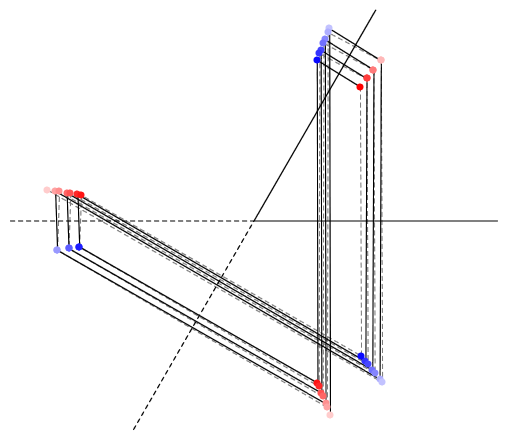Vanderlinde's Classical Electromagnetic Theory discusses the method of images, with examples given for intersecting infinite conducting (half) planes. In particular, the "kaleidoscope" effect of alternating image charges for planes intersecting at 90° and 60° is mentioned.
The reader is also invited to reflect (ho ho) on what happens when the angle of intersection is 72°. The discussion seems to suggest to me that in this case, the alternating charges for the image points would end up cancelling each other, leading to a constant field. If so, that would seem to imply that in the original problem, the charge distributions on the conducting planes would conspire to cancel the field between them out.
However, I'm not at all confident this is correct, and I haven't been able to find an alternative source to verify/invalidate this gut feeling. Am I anywhere near the right track?
Edit: Apologies for incomplete details. From the text, which is discussing the method of images for point charges and planes:
A charge placed near the corner of two intersecting plates has images not only behind each of the conducting planes, but each of the images in turn has an image in the other planes and so on, very much like an optical image. Thus when two plates meet at right angles, a negatively charged image “appears” behind each plate, and a positive image lies diagonally through the point of intersection. It is not hard to see that this arrangement does indeed lead to equipotential surfaces along the planes defined by the conductors. When the planes intersect at 60◦, five images of alternating sign will be required (the kaleidoscope is the optical analogue of this arrangement). Clearly when the angle is not commensurate with 360◦, this method will not work because an infinite number of images would be required. The reader might reflect on what happens when two conducting planes intersect at 72◦.
I had mistakenly assumed that the case being discussed involved symmetrically placed charges, so that following the image process naïvely would lead to positive and negative images coinciding.


